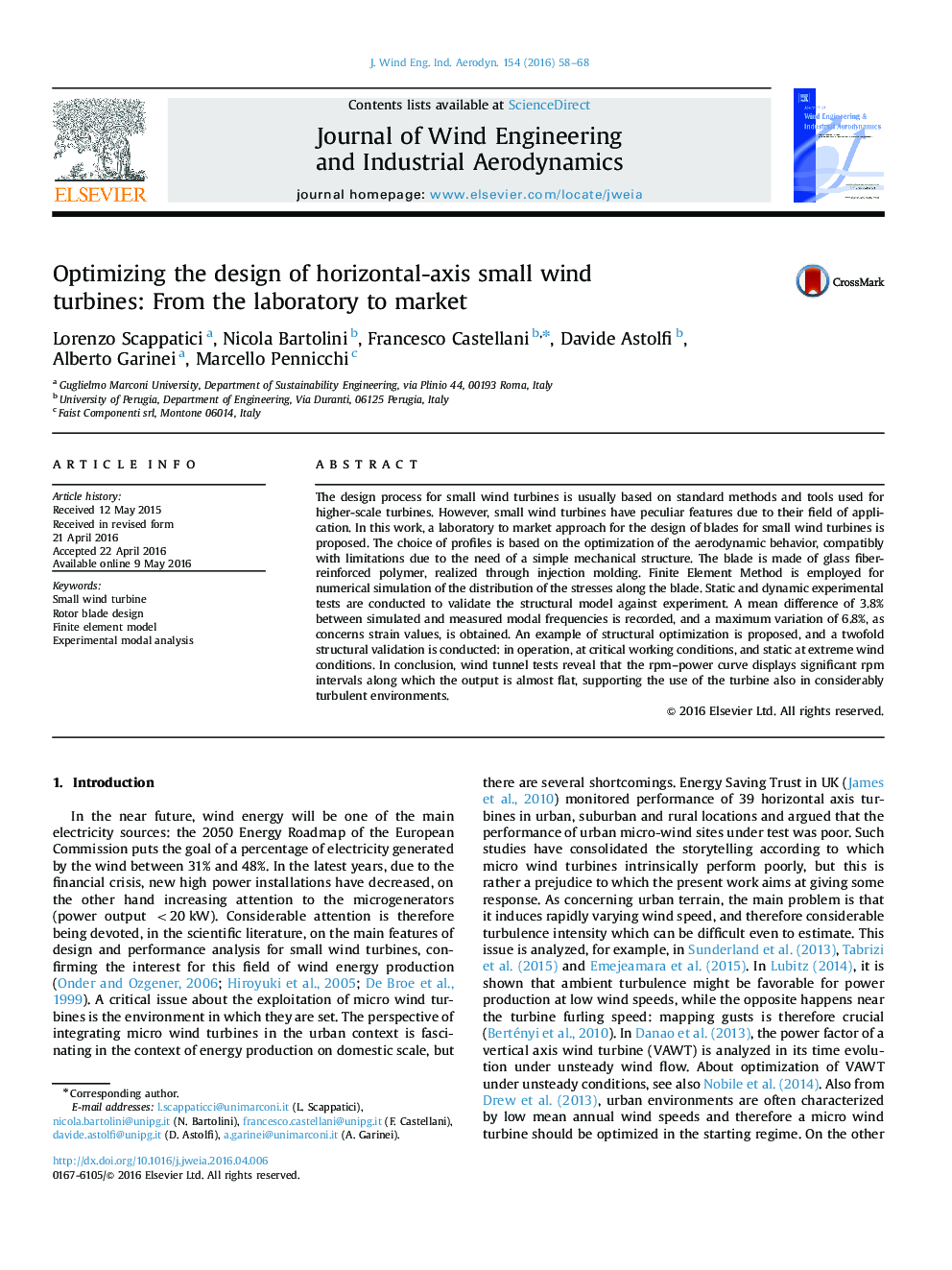| Article ID | Journal | Published Year | Pages | File Type |
|---|---|---|---|---|
| 293070 | Journal of Wind Engineering and Industrial Aerodynamics | 2016 | 11 Pages |
•The design of a micro wind turbine is depicted in a laboratory to market approach.•A FEM model is proposed for the blades made of glass fibre reinforced polymer.•Static and dynamic tests are conducted and the numerical model is validated.•Numerical modelling gives hints for structural optimization of the blades.•Experiments confirm structural reliability and stable performances for several rpm.
The design process for small wind turbines is usually based on standard methods and tools used for higher-scale turbines. However, small wind turbines have peculiar features due to their field of application. In this work, a laboratory to market approach for the design of blades for small wind turbines is proposed. The choice of profiles is based on the optimization of the aerodynamic behavior, compatibly with limitations due to the need of a simple mechanical structure. The blade is made of glass fiber-reinforced polymer, realized through injection molding. Finite Element Method is employed for numerical simulation of the distribution of the stresses along the blade. Static and dynamic experimental tests are conducted to validate the structural model against experiment. A mean difference of 3.8% between simulated and measured modal frequencies is recorded, and a maximum variation of 6.8%, as concerns strain values, is obtained. An example of structural optimization is proposed, and a twofold structural validation is conducted: in operation, at critical working conditions, and static at extreme wind conditions. In conclusion, wind tunnel tests reveal that the rpm–power curve displays significant rpm intervals along which the output is almost flat, supporting the use of the turbine also in considerably turbulent environments.
